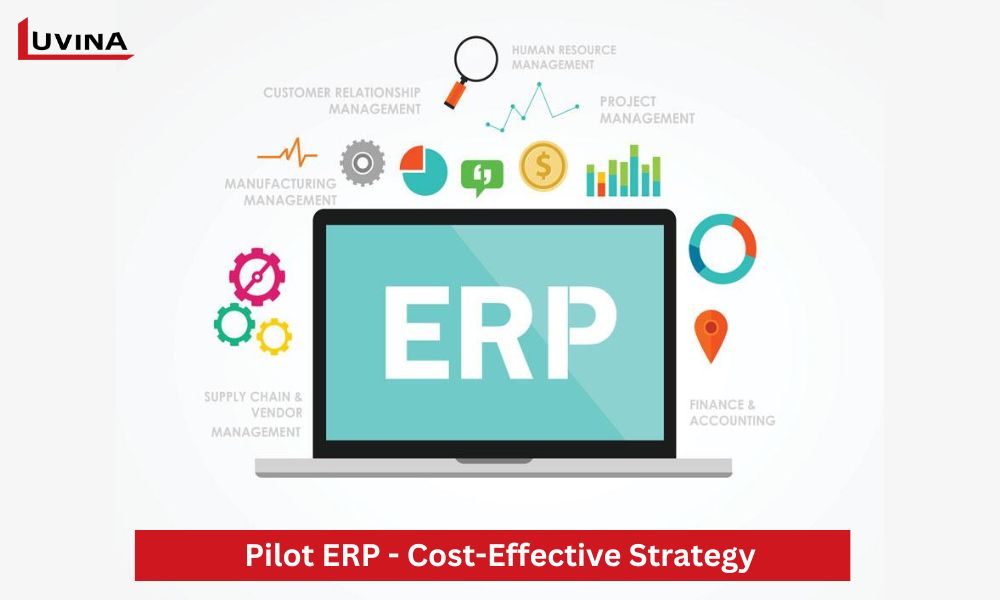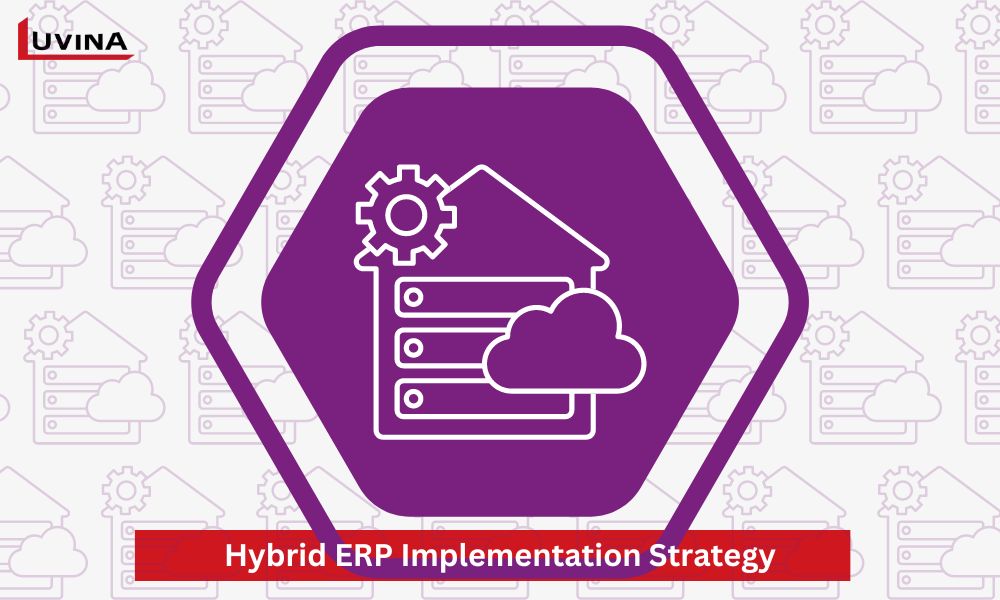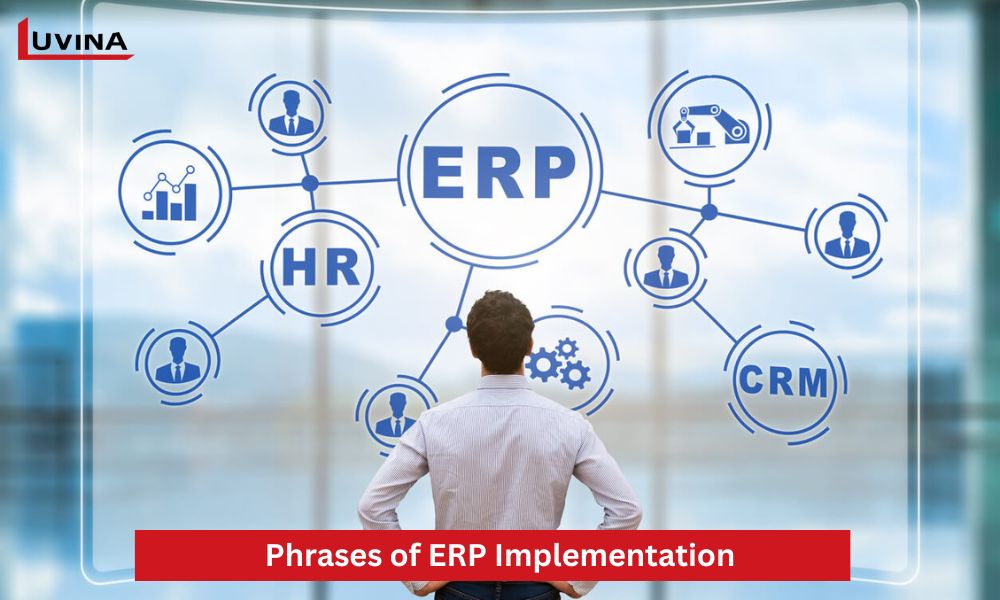To have an effective ERP system that meets your business requirements, you need a well-planned ERP implementation strategy, step by step. A suitable strategy helps increase ROI, prepares you to face any challenges during the implementation process, and mitigates business risks.
In this article, we will outline some of the most common strategies for successful ERP implementation, guide you on how to choose the right strategy and provide insights into the ERP implementation process. If you’re in the process of planning an ERP system for your company, this article is for you.
Top 5 ERP Implementation Strategies
The ERP implementation strategy can be understood as the framework for the entire ERP project. Having a specific, appropriate strategy will help the ERP project be deployed more quickly, cost-effectively, and with higher efficiency. Below are the 5 most common types of strategies applied to ERP implementation projects.

1. Big Bang ERP Implementation
The Big Bang strategy, also known as the Single Step Strategy, is a strategy that involves transitioning all employees and business functions to the new system at once. If this strategy is applied, steps such as design, testing, training, etc., must all be completed before the official system launch date.
Pros:
- – Faster implementation speed
- – Minimized deployment costs
- – Immediate benefits for the business.
Cons:
- – There is a higher risk of incidents occurring
- – It is difficult to revert to the old system
- – Temporary productivity declines as employees need time to get used to the new system.
2. Parallel ERP Implementation
This strategy involves the simultaneous use of both the old system and the new ERP system for a certain period. It serves as a backup plan, as you can revert to the old system if issues arise with the new ERP system. Parallel ERP implementation is well-suited for companies utilizing a two-tier ERP architecture. Some organizations often use this strategy for critical features that need continuous operation.
Pros:
- – Lower risk
- – Easy transition, backup
- – High data security during migration
Cons:
- – Require data entry twice
- – Double the risk of inconsistent data errors
- – Require more time and resources
3. Pilot ERP Implementation
With this strategy, you only deploy the ERP solution in 1 specific high-profit business function to test the effectiveness of the solution, ensuring maximum benefits from the start. This is a safe ERP implementation strategy, but it takes time to apply the ERP solution from one pilot feature to another. Additionally, this strategy also makes it difficult for businesses to evaluate the effectiveness of the ERP system on a large scale.

Pros:
- – Cost-effective
- – Low risk
Cons:
- – Time-consuming deployment
- – Difficulty in comprehensive evaluation of effectiveness
4. Phased rollout
A phased rollout is an ERP implementation strategy that occurs in stages. With this strategy, the deployment of features and tools takes place over an extended period (several weeks or months). This low-risk strategy allows businesses to leverage immediate benefits from the functionalities. Furthermore, businesses can apply the experiences from the initial deployment stages to subsequent rollout phases.
However, this strategy also consumes a significant amount of time. Additionally, businesses need to budget for both the old and new systems simultaneously.
Phased rollout typically consists of 3 main types:
- – Phased rollout by module: Focuses on deploying individual ERP modules serving specific business functions.
- – Phased rollout by business priority: Focuses on deploying modules based on urgent business requirements.
- – Phased rollout by business unit: Involves transitioning one or several units or departments to the new ERP system.
Pros:
- – Low risk
- – Immediate benefits
Cons:
- – Time-consuming
- – Cost-intensive
5. Hybrid
The hybrid strategy combines elements of other strategies. For example, it could involve a combination of parallel and phased rollouts or a blend of Big Bang and phased rollouts. Hybrid strategies leverage the strengths of these approaches to minimize risks during implementation and meet specific business needs.

Pros:
- – More adaptable approach
- – Lower risk
Cons:
- – Time-consuming
- – Cost-intensive
Steps of ERP Implementation
After completing several important pre-implementation steps, such as planning, designing, re-engineering, etc., the ERP implementation process will officially take place. The ERP implementation process is typically divided into various stages, depending on the ERP solution provider company. However, generally, ERP implementation consists of the following basic steps:
Step 1: Data Conversion
Data conversion is a crucial task in the ERP implementation process. Before proceeding with the conversion, ensure that the data has been cleaned and formatted to fit the new system. This data migration process also needs to be:
– Carefully planned
– Tested for migration
– System checked after conversion to detect issues (if any)
Step 2: Employee Training, Change Management
To ensure all employees understand the new system, building a training program is crucial. You can conduct training sessions yourself or utilize training services provided by ERP partners. These training service companies not only organize practical training sessions but also provide usage guidelines and online training modules.
During this process, you also need to help employees understand the benefits of the new system to gain their acceptance of the change. If employees are reluctant, minimize resistance through change management strategies. Providing continuous training and support is also a way to address employee concerns.
Step 3: Deployment and Go-live
After completing the data conversion to the new system, you need to test to ensure the system is ready for operation. ERP deployment also needs to be carefully planned to avoid disrupting business operations. You can deploy the system in stages for better control. After system deployment, continuously monitor system activities to address any arising issues.
Step 4: Post-Implementation Support
Support and maintenance are crucial parts of the ERP implementation strategy. When implementing a new system, you will encounter various issues. You need to continuously gather user feedback to improve and optimize the system.

Selecting an ERP Implementation Strategy for Your Business
Each ERP implementation strategy has its pros and cons, suitable for different types of businesses. To choose the most suitable and optimal strategy for your business, you should consider the following four factors:
Business Scale
Strategies for successful ERP implementation will vary depending on the scale of the business. For example, the Big Bang strategy may be suitable for small and medium-sized businesses (SMBs) because these companies can handle the transition in one go. However, if you have a large company with multiple business branches, your company may be more suitable for a phased rollout strategy.
Cost
If you want to optimize costs for the project, the Big Bang strategy is very suitable because it has a short implementation time, and your company also does not need to use two systems at the same time.
Business Risk
Parallel or phased rollout is the least risky ERP implementation strategy. These two strategies allow businesses time to familiarize themselves with the new system or revert to the old system if the new system encounters issues.
Each strategy has a different level of risk
Expected ROI
The Big Bang strategy will help businesses maximize the benefits of the ERP solution, reduce process bottlenecks, and generate ROI quickly. This is the ERP implementation strategy with the potential to create the largest ROI. However, other strategies such as hybrid, phased, or pilot focusing on critical functions may also generate significant ROI.
ERP Implementation Tips
Regardless of the ERP implementation strategy you choose, to ensure the effectiveness of the implementation process, don’t forget the following tips:
– Control security and data compliance to avoid legal issues.
– Place trust in reputable consulting firms.
– Be realistic when budgeting.
– Establish a detailed project roadmap with tasks associated with each phase and timeframe.
– Communicate about the project with employees and stakeholders to avoid unnecessary concerns. Especially, seek support from senior managers across departments for effective ERP implementation.
– Choose reliable IT outsourcing services with sufficient resources and experience to implement ERP according to your requirements.

– Analyze ROI and KPIs to evaluate project effectiveness.
– Prioritize key features for better ROI.
– Invest in training and user support to facilitate the ERP implementation process.
– Cleanse old data before migrating to the new ERP system.
– Consider customization carefully, avoiding excessive customization that may hinder upgrades to new versions.
>> Also read: Calculation of ERP implementation cost
Conclusion
Choosing the right method and ERP implementation strategy based on the business scale, cost, risk acceptance level, and expected ROI will increase the success rate of your ERP project. By combining detailed planning and a roadmap with the strategies mentioned above, you can have an optimized ERP system that improves business processes.
For a smooth ERP implementation, consider collaborating with Luvina for comprehensive ERP development consulting. Luvina provides a full range of ERP services, including ERP implementation solutions tailored to your business model to help address your current challenges.
Collaborate with Luvina for advice on the most suitable ERP implementation strategy
Utilizing popular solutions like GRANDIT, DYNAMICAX, WORKDAY, SAP, and ORACLE, Luvina not only advises but also supports the entire deployment process from integration, migration, customization, and testing to support and maintenance.
Contact Luvina today for advice on the most suitable ERP implementation strategy and start transforming your business soon.
Related Posts:









Read More From Us?
Sign up for our newsletter
Read More From Us?
Sign up for our newsletter